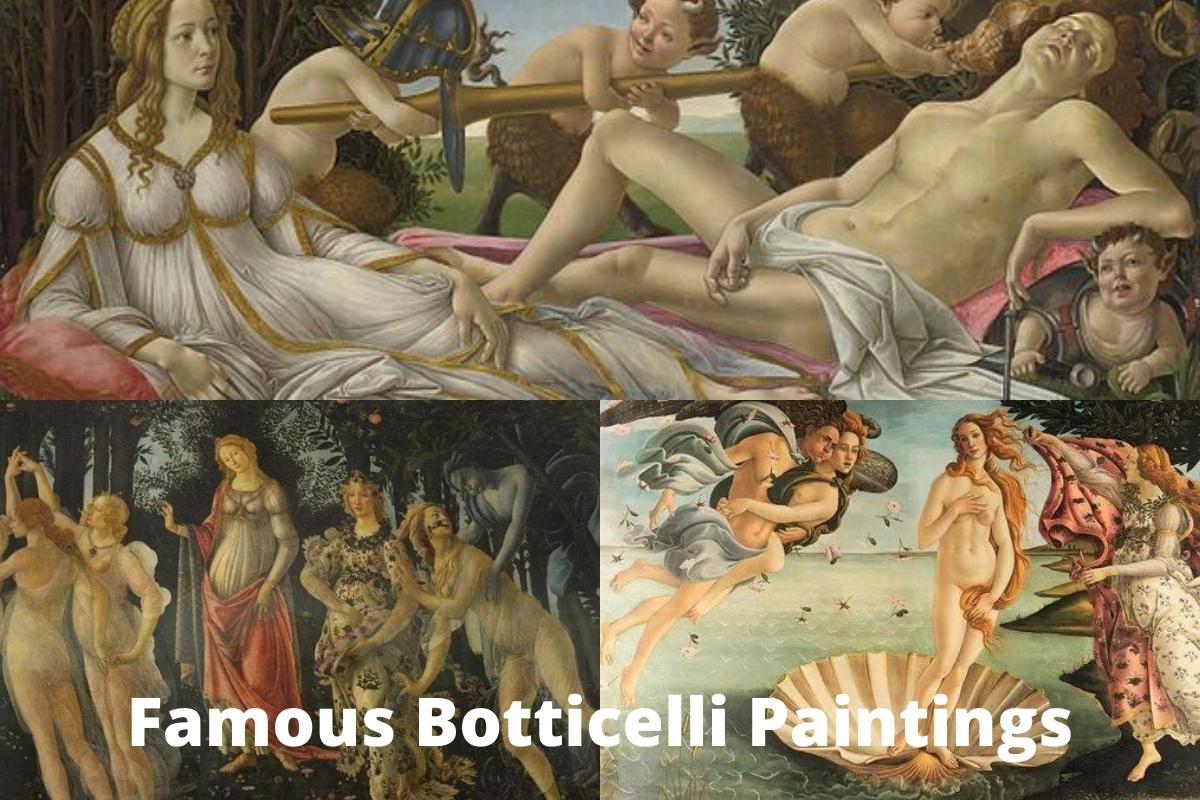Alessandro di Mariano di Vanni Filipepi (c. 1445 – May 17, 1510), better known as Sandro Botticelli, was an Early Renaissance Italian painter.
Botticelli’s posthumous reputation languished until the late nineteenth century, when he was rediscovered by the Pre-Raphaelites, who sparked a reassessment of his work. Since then, his works have been regarded as exemplifying the linear elegance of Early Renaissance painting.
Botticelli painted a broad variety of religious themes (including hundreds of renderings of the Madonna and Child, many in the round tondo form) as well as some portraits, in addition to the mythical subjects for which he is best known today.
Botticelli most famous paintings are The Birth of Venus and Primavera, both of which are housed in Florence’s Uffizi. He spent his whole life in roughly the same Florence area, with the exception of the months he spent painting in Pisa in 1474 and the Sistine Chapel in Rome in 1481–82.
Only one of Botticelli’s paintings, the Mystic Nativity (National Gallery, London), is actually dated (1501), but others may be dated with varied degrees of accuracy based on archival documents, allowing the evolution of his style to be followed with some confidence.
Sandro Botticelli Famous Paintings
1. The Birth of Venus
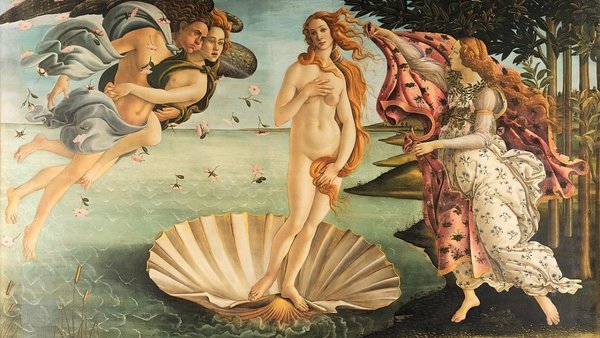
The Birth of Venus is a picture that was most likely completed in the mid 1480s. It represents the goddess Venus landing at the beach after her birth, after she had emerged fully-grown from the water (called Venus Anadyomene and often depicted in art). The picture is housed at Florence, Italy’s Uffizi Gallery.
Although they are not a couple, the artwork is inextricably linked to Botticelli’s other big mythical painting, the Primavera, which is also housed in the Uffizi. They are two of the most renowned paintings in the world, as well as symbols of the Italian Renaissance; the Birth of Venus is more well-known than the Primavera.
They were essentially unparalleled in Western art since classical antiquity in terms of portrayals of topics from classical mythology on such a massive scale, as was the size and importance of a naked female figure in the Birth.
It was formerly assumed that they were both commissioned by the same member of the Medici family, however this is no longer the case.
Art historians have constantly studied them, with the major issues being: the emulation of ancient artists and the environment of wedding festivities, the impact of Renaissance Neo-Platonism, and the identity of the commissioners.
Most art historians believe, however, that the Birth does not need rigorous investigation to interpret its significance, as the Primavera most likely does.
While the picture has complexities, its basic meaning is a clear, if distinctive, presentation of a familiar scenario from Greek mythology, and its attraction is sensory and highly approachable, which explains its huge popularity.
2. Primavera
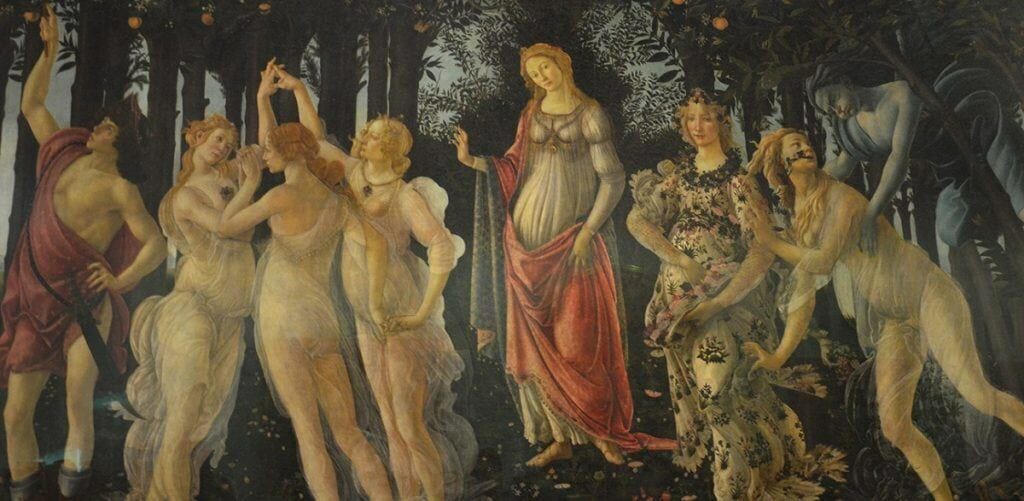
Primavera is a big tempera paint panel artwork from the late 1470s or early 1480s. It has been called “one of the most talked about and contentious paintings in the world,” as well as “one of the most popular paintings in Western art.”
The picture represents a gathering of ancient mythology characters in a garden, but no tale has been discovered that ties this specific group together.
Most commentators believe that the picture is an allegory based on the lush blooming of Spring, although versions of its particular interpretation differ, with many including Renaissance Neoplatonism, which enthralled intellectual circles in Florence at the time.
The painting’s history is uncertain; it may have been commissioned by a member of the Medici family, but the certainty of its commission is unknown.
It relies on a variety of ancient and Renaissance literary influences, including the works of the Ancient Roman poet Ovid and, less likely, Lucretius, and may even refer to a poem by Poliziano, the Medici house poet who may have assisted Botticelli in the composition’s creation.
The picture has been in the collection of the Uffizi Gallery in Florence, Italy, since 1919.
3. Venus and Mars
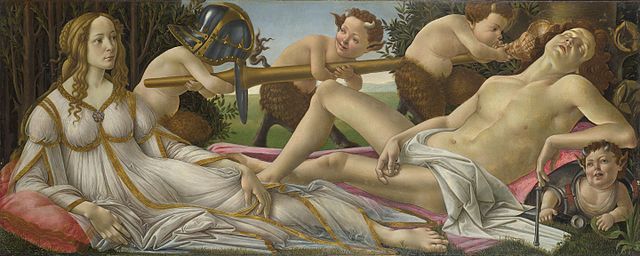
Venus and Mars (or Mars and Venus) is a panel painting from about 1485.
It depicts Venus, the goddess of love, and Mars, the god of battle, in an allegory of beauty and heroism. The young and voluptuous couple reclines in the woods, surrounded by lively infant satyrs.
The actual date of Venus and Mars is unknown, however the National Gallery of Art dated it in 2017 as “c. 1485.” It is most likely a few years after the Primavera, Pallas, and Centaur (all about 1482), and around the period of The Birth of Venus (c. 1486).
It is the only one of these paintings that is not housed at the Uffizi in Florence; it has been on display in the National Gallery in London since 1874.
4. Adoration of the Magi
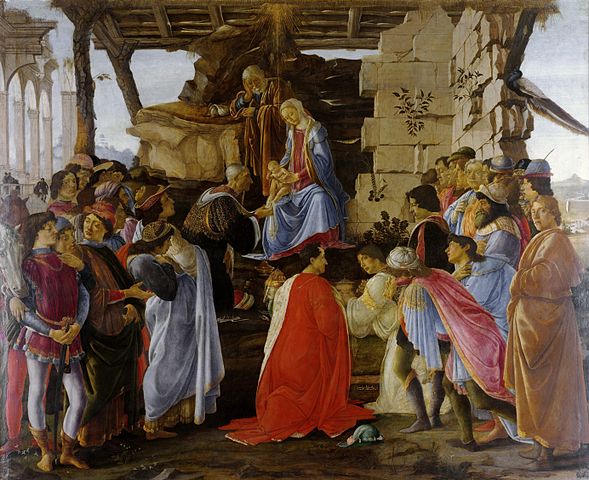
The Adoration of the Magi is an early painting by Sandro Botticelli, dated from 1475 or 1476. The sculpture is on exhibit at Florence’s Uffizi.
Botticelli was asked to paint at least seven different versions of The Adoration of the Magi. Gaspare da Zanobi del Lama commissioned this version for his burial chapel at Santa Maria Novella.
Many people are present in the scenario, including various members of the Medici family.
It’s difficult to say if Botticelli’s close relationship with the Medici brothers permitted the affluent Gaspare to include portraits of their kinsmen in his altar-piece, or whether Gaspare welcomed the chance to pay a gracious respect to these powerful figures.
However, it is clear from the considerable care Botticelli took with these figures that this was a crucial aspect of the endeavor. Gaspare is also supposed to be shown in the artwork as the elderly guy on the right with white hair and a light blue robe, staring and pointing at the viewer.
Furthermore, Botticelli is said to have painted a self-portrait on the far right as the blonde guy with the yellow robe.
5. Madonna of the Magnificat
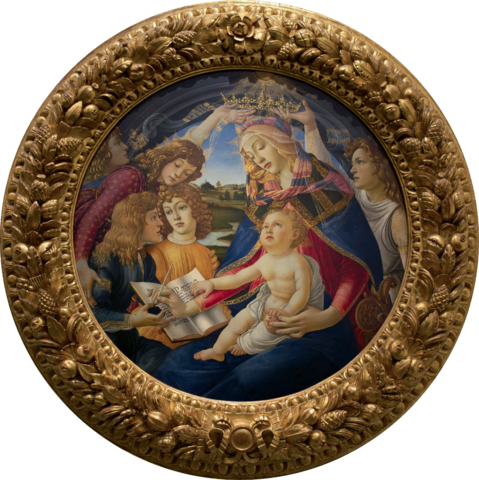
The Madonna of the Magnificat, also known as the Virgin and Child with Five Angels, is a painting of circular or tondo shape that is also known as the Virgin and Child with Five Angels.
The Virgin Mary is shown in the tondo penning the Magnificat with her right hand, a pomegranate in her left, as two angels crown her with the Christ child on her lap. It is presently on display at the Uffizi galleries in Florence.
The painting’s history is unknown, although the Uffizi acquired it from a private collection in 1784. It might have originated from one of the several monasteries that Archduke Pietro Leopoldo suppressed.
There are multiple copies of the artwork, including one at the Louvre and another in New York’s Pierpont Morgan Library. The leftmost angel, crowning the Virgin, is removed in the Louvre’s copy, making space for the topmost angel in the trio to the left to extend his wings widely.
6. The Mystical Nativity
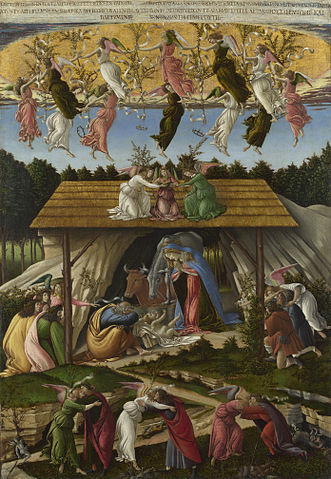
The Mystical Nativity is an oil on canvas work from about 1500–1501 that is presently on display in the National Gallery in London. It is his only signature work and has interesting iconography for a Nativity painting.
It has been believed that the painting was influenced by Girolamo Savonarola, whose influence can be seen in a number of Botticelli’s later paintings, however the contents of the picture might have been determined by the person ordering it.
The painting follows the medieval habit of making the Virgin Mary and newborn Jesus bigger than other people and their surroundings; this was most likely done on purpose for impact, given Botticelli’s previous works employ accurate graphical perspective.
7. Portrait of a Young Man holding a Roundel
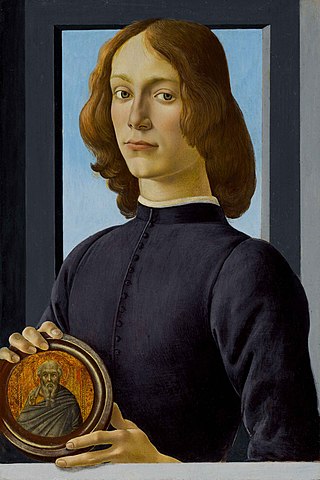
Sandro Botticelli’s Portrait of a Young Man Holding a Roundel (also known as Portrait of a Young Man Holding a Trecento Medallion) that is thought to have been painted circa 1480 based on its style.
The identity of the subject of the painting is unclear, although researchers believe it might be a member of the Medici family, given Lorenzo de’ Medici was one of his most important patrons.
The artwork is said to depict the Florentine upper society’s beauty ideals during the Renaissance. His tunic is of simple, high quality, and the blue hue was unusual at the period.
The piece was painted in tempera on poplar wood and is 58.7 cm in height by 38.9 cm in breadth. The bearded saint in the Trecento medallion was inserted after the image was completed.
8. Madonna and Child
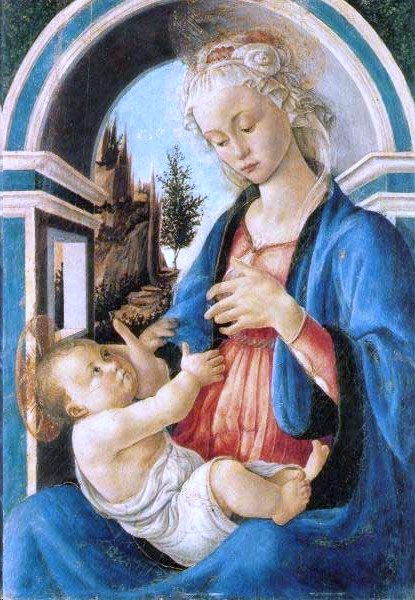
Madonna with Child is a tempera painting from about 1467 that is displayed in Avignon, France’s Musée du Petit Palais.
He has decided to outfit her in a blue cloak and a red gown; blue was a highly costly pigment at the time and yet it dominates the painting; both colors would have been considerably more bright in Botticelli’s day and have since faded with time.
9. Portrait of a Young Woman
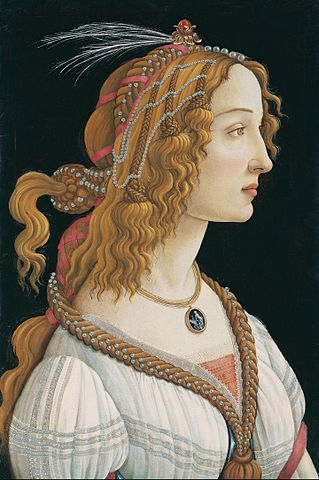
Portrait of a Young Woman is a picture typically attributed to Botticelli and was completed between 1480 and 1485.
However some art historians credit Jacopo da Sellaio as the artist.
The lady is shown in profile, but her breast is rotated in three-quarter perspective to display a cameo pendant she wears around her neck. The medallion is a reverse replica of “Nero’s Seal,” a well-known ancient carnelian depicting Apollo and Marsyas that belonged to Lorenzo de’ Medici.
It is located in Frankfurt, Germany’s Städel Museum. Similar Botticelli works may be seen at the National Gallery in London, the Gemäldegalerie in Berlin, and the Marubeni Collection in Tokyo.
Aby Warburg, an art historian, initially argued that the picture was an idealized portrait of Simonetta Vespucci.
10. Portrait of a Young Man
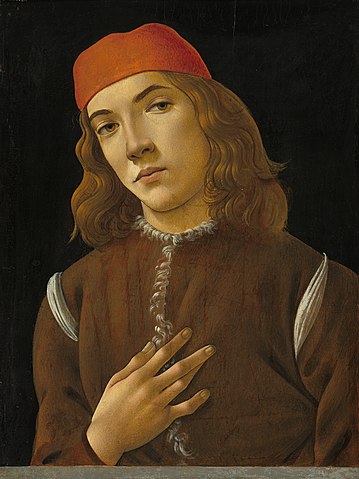
Portrait of a Young Man or Portrait of a Youth, an Italian Renaissance painting ascribed to Sandro Botticelli (1446–1510), is an example of portraiture.
It was painted with tempera on panel in the early 1480s (c. 1482/1485) and is presently located in the National Gallery of Art in Washington, D.C. Bernard Berenson, an art historian, credited the picture to Botticelli in 1922.
His fascinating countenance and beautiful hand motion, which some have interpreted as an early portrayal of juvenile arthritis, are highlights of this painting.

